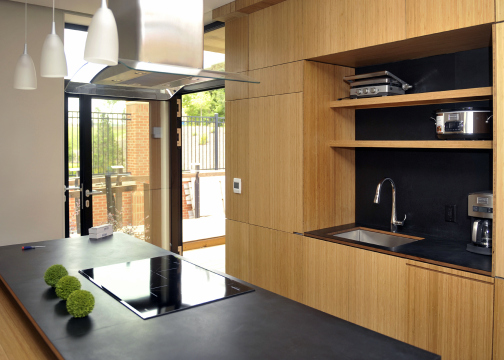Wednesday, 07/01/2026 | 04:30 GMT+7
As part of the administration’s effort to cut energy waste in the nation’s buildings and double energy productivity by 2030, the Energy Department today announced $4 million to develop and demonstrate new energy efficiency solutions for the nation’s homes.
The Energy Department’s Building America program develops cutting-edge innovations and resources with industry partners to spur the residential buildings market to adopt energy efficiency measures that will provide 50% savings in new homes by 2025 and 40% savings in existing homes by 2030.

A major focus of the work is home heating and cooling. Typically, heating and cooling account for 40% of a home’s energy consumption, the largest single energy use and more than water heating, refrigeration, and lighting combined. In 2014, U.S. homeowners spent $70 billion to heat their homes and $24 billion to cool them. Improving the energy efficiency of home heating and cooling systems and building envelopes (roof, walls, and windows) could reduce energy consumption for heating and cooling by as much as 70%.
For these Building America projects, teams will focus on developing and implementing solutions to three inter‐related core technical challenges: high performance building envelope assemblies and systems; optimal comfort systems for heating, cooling, air distribution, and humidity control; and high performance ventilation systems and indoor air quality strategies. The Energy Department will fund projects that develop and demonstrate integrated solutions to any or all of these core technical challenges and primarily focus on solutions for the hot/humid, mixed humid, and cold climate zones. Together these climate zones cover most of the country, but have very different requirements. These projects will demonstrate techniques that address these requirements, while promoting energy efficiency at a reasonable cost and preserving indoor air quality.
Anh Tuan








 Webinar 2: “Financial Support for Energy Efficiency Enterprises – Opportunities and Challenges”
Webinar 2: “Financial Support for Energy Efficiency Enterprises – Opportunities and Challenges”
 Vietnamese enterprises achieve green growth and cut costs through energy efficiency
Vietnamese enterprises achieve green growth and cut costs through energy efficiency
 Capacity Building for Program Implementing Entity
Capacity Building for Program Implementing Entity
 Enhance Energy Efficiency Knowledge for Managers of Cement Industrial Enterprises
Enhance Energy Efficiency Knowledge for Managers of Cement Industrial Enterprises
 Capacity building for participating financial institutions in Ho Chi Minh City
Capacity building for participating financial institutions in Ho Chi Minh City
 Strengthening capacity for energy management officers of local government agencies
Strengthening capacity for energy management officers of local government agencies
 Steel Enterprises Saving Energy and Enhancing Competitiveness
Steel Enterprises Saving Energy and Enhancing Competitiveness